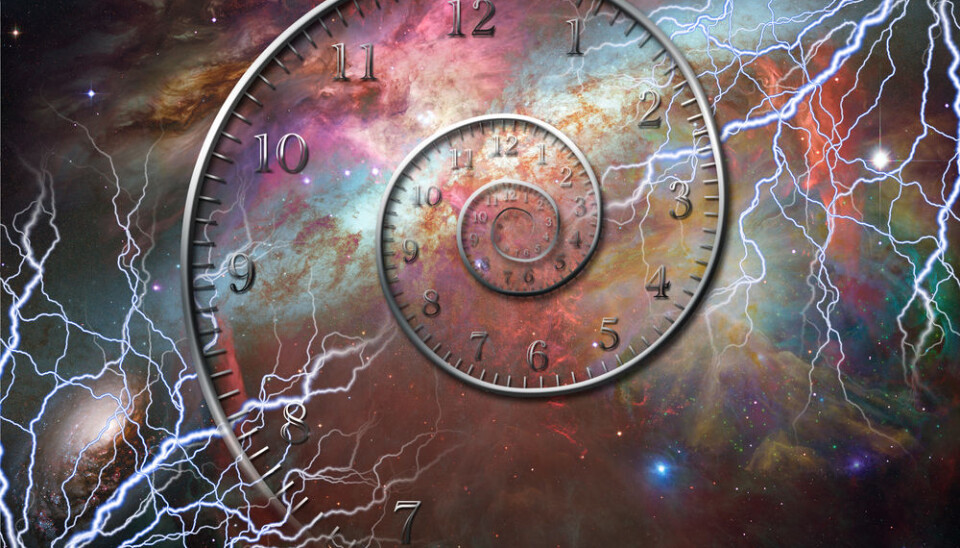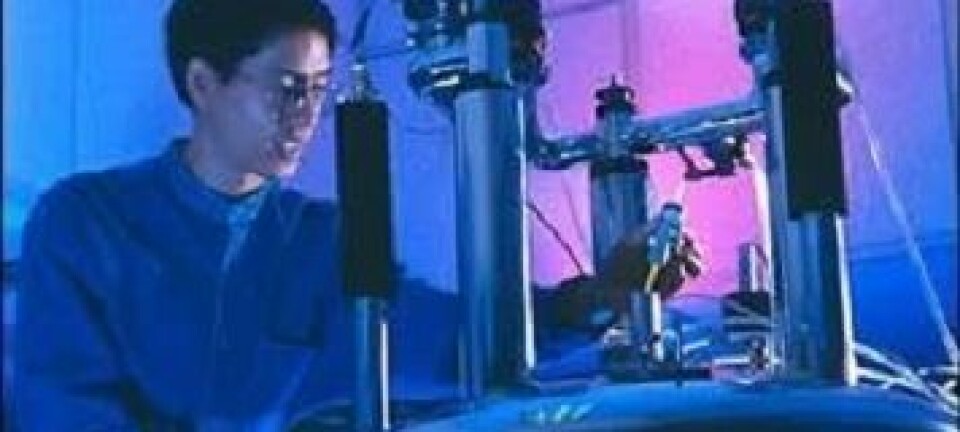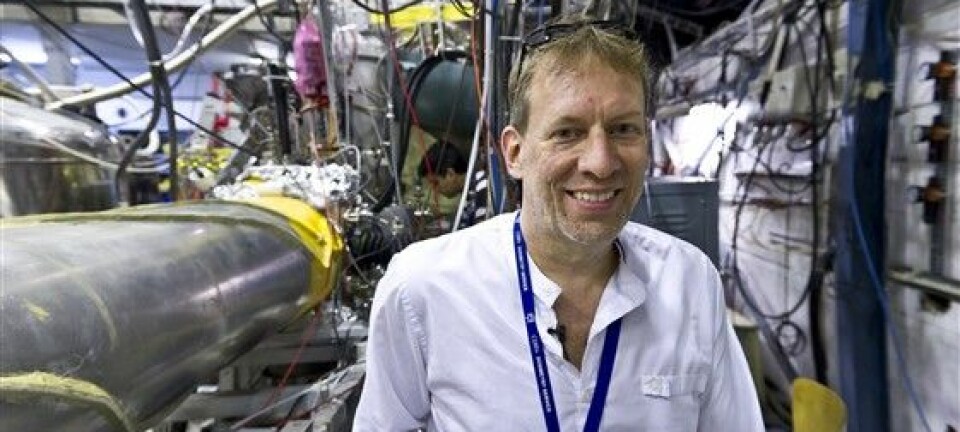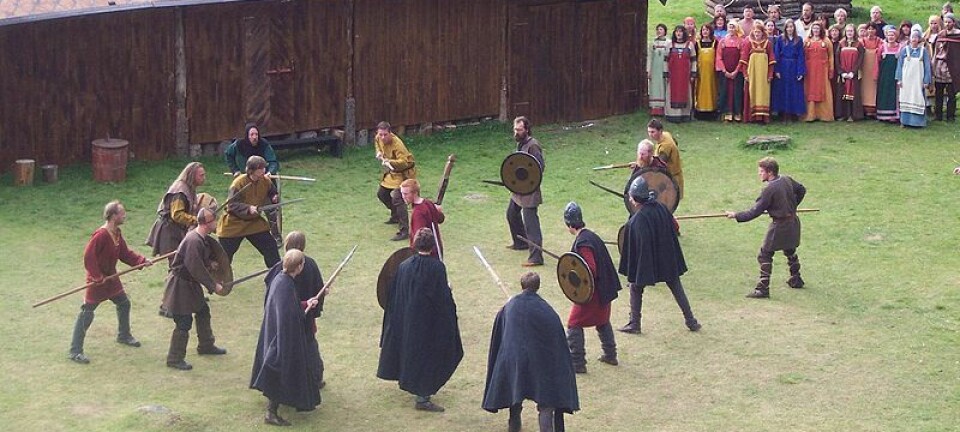
Ultra-precise atomic clock will reveal if physical constants really are constant
New network of quantum entangled clocks will be so precise that it can measure if physical constants change on a daily basis.
A second is always a second.
Nevertheless, no clocks are so precise that they can measure the exact duration of a second.
So even the most precise atomic clocks are 0.000000000000000001 seconds off each second. Over the course of a few billion years that equals one second.
A single second off over the course of a few billion years may sound like a very precise clock -- and in a way it is but scientists from the University of Copenhagen would like a clock that is even more precise.
So now the scientists are suggesting that the atomic clocks around the world be connected by light rays; creating one big network of atomic clocks.
This network would measure time more precisely than ever before.
“A more precise clock would lead to a number of new, interesting possibilities,” says Professor Anders Søndberg Sørensen of the Niels Bohr Institute who recently co-authored a proposal for an improved atomic clock that was published in Nature Physics.
Precise clocks created GPS
With more precise clocks come more precise experiments, and with more precise experiments come new technological possibilities.
The Global Position System (GPS) for instance, only became possible when a new clock was invented that was so precise that it could measure how long it took for a signal from a GPS transmitter on Earth to reach satellites in space.
Similarly, researchers hope that a more precise clock will lead to new scientific possibilities – and solve the debate over whether constants of nature are really constant at all.
For instance, is Planck’s constant, which plays a central role in quantum mechanics, the same today as it was yesterday?
“A more precise clock could provide answers to those kinds of questions, and it would be a huge scientific breakthrough to find those answers,” says Sørensen. “Of course I can’t predict which technological possibilities would follow in the wake of a more precise clock, but I do expect that there will be some.”
Interesting and innovative: scientist
Professor Michael Drewsen, who studies atomic, molecular and optical physics at the Department of Physics and Astronomy, calls the new proposal “interesting and innovative”.
“It’s still a long way off, but the study could give us a model to work towards in the improvement of clocks,” says Drewsen.
He agrees with Sørensen that more precise clocks will enable researchers to measure differences in gravity on objects that are separated by just a few centimeters and test how accurately the relativity theory applies. In order to measure these things we need to have an instrument that is sufficiently precise.
“This might be the way to achieve that,” says Drewsen.
The anatomy of a clock
In order to fully understand the researchers’ idea of joining up atomic clocks, a basic understanding of atomic clocks – and clocks in general – might be useful.
Basically, a clock consists of two parts:
-
Something that moves at a consistent pace -- e.g. a pendulum or an atom.
- Something that reads the moveable component and converts it into time.
In a classic clock the pendulum moves at a consistent pace. The swinging of the pendulum is then converted into seconds, minutes, and hours.
However, the difference between the classic clock and the atomic clock is that the frequency the pendulum varies slightly, while atoms swing at exactly the same frequency all the time, which makes them incredibly precise clocks.
Nevertheless, even though the electrons move around the atomic cores at an entirely consistent frequency, it still isn’t possible to make a completely accurate clock that way.
“The problem arises when we read the atoms. A small uncertainty of measurement means that the atomic clock loses a second over the course of billions of years,” says Sørensen.
More atoms in the same clock
In order to make the clocks more precise, the scientists want to join up several atoms in the same network inside the atomic clocks -- what’s known as quantum entanglement.
This will reduce the uncertainty of measurement and make them more precise.
Scientists around the world are currently working on entangling the atoms in the individual atomic clocks in order to make them more precise.
It’s a technical challenge that could take years to solve.
Entangled clocks across continents
When scientists eventually do manage to solve the problem of atomic entanglement, the new study suggest that the process should be taken one step further, proceeding to entangle the atomic clocks across countries.
According to the theory, it’s possible if the atomic clocks are connected by rays of light that pass information from one clock to the other via individual photons.
In that way, entanglement is created between two atomic clocks situated on different continents.
“It’s a futuristic and speculative proposal -- but our paper presents a model for how it could be done,” says Sørensen.
Great challenges ahead
Sørensen says that there are many technical challenges that need to be solved before several clocks can be connected by light.
Firstly, the task of entangling atoms in the individual clock needs to be solved -- a problem that physicists are currently working hard on solving.
Once they succeed, they need to develop the technology necessary to pass information on via a single photon. Researchers around the world are currently working on this with a view to using it for encryption.
This would be a lot easier if all countries allocated their dedicated funds for research in atomic clocks to a single country, such as France, where five atomic clocks could be built.
If this were done, it wouldn’t be necessary to entangle atoms across continents.
“That would be the easiest solution, but it might not be possible -- perhaps for political reasons,” says Sørensen.
He hopes that a more precise clock could be a possibility in 20 years, but acknowledges that it could take up to 100 years before it will become a reality -- if it will ever happen at all.
-------------
Read the original story in Danish on Videnskab.dk
Translated by: Iben Gøtzsche Thiele











